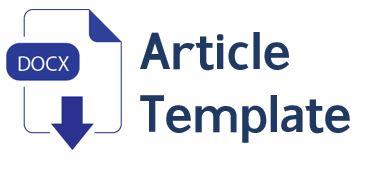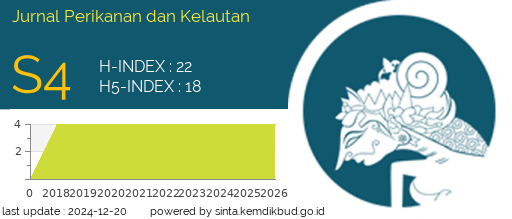Types and Abundance of Microplastics in Meretrix meretrix Clams and Sediments in the Sri Tanjung Coastal Area, Rupat Sub-District, Bengkalis
DOI:
https://doi.org/10.31258/jpk.30.2.233-238Keywords:
Bengkalis, Microplastics, Meretrix meretrixAbstract
This study was conducted in August 2024 in the coastal area of Sri Tanjung Village, Rupat Sub-district, Bengkalis Regency. The objectives of this research were to identify the types and abundance of microplastics, examine the differences in microplastic abundance across sizes, analyze the relationship between microplastic abundance and size (shell length and total weight), and explore the relationship between microplastic abundance in Meretrix meretrix clams and sediments. A survey method was used. Random sampling of M. meretrix was carried out using small shovels and traditional fisher tools (iron rakes) during the lowest tidal conditions. Results indicated that water quality parameters in Sri Tanjung were relatively good, with temperatures of 28–31°C, salinity ranging from 21–26%, brightness values between 19–25 cm, and pH values of 7–7.7. Types of microplastics found in M. meretrix and sediments in the coastal area included fragments, fibers, and films, with an average microplastic abundance of 55.16 particles/g and 1310 particles/kg, respectively. The abundance of microplastics was categorized based on the morphometric size of clams: small (61.32 particles/g), medium (45.01 particles/g), and large (59.16 particles/g). Sediments showed an average abundance of 1310 particles/kg. Fragment-type microplastics were the most dominant in both clams and sediments, with average abundances in small clams (29.22 particles/g), medium clams (21.29 particles/g), large clams (62.27 particles/g), and sediments (541.3 particles/kg). Film-type microplastics were the least abundant, with average values in small clams (14.44 particles/g), medium clams (10.80 particles/g), large clams (13.05 particles/g), and sediments (319.3 particles/kg). A one-way ANOVA test revealed significant differences (p < 0.05) in microplastic abundance between small and medium and medium and large clams but not between small and large clams (p > 0.05)
Downloads
References
Alpiansyah B., Amin, B., & Musrifin, G. (2021). Identification of Microplastic Type and Aobundance in East Coast of Karimun Besar Island, Riau Islands. Journal of Coastal and Ocean Science, 2(2): 104-110
Ayuningtyas, W.C., Yona, D., Julinda, S.H., & Iranawati, F. (2019). Kelimpahan Mikroplastik pada Perairan di Banyuurip, Gresik, Jawa Timur. JFMR (Journal of Fisheries and Marine Research), 3(1): 41-45.
Dewi, I.S., Budiarsa, A.A., & Ritonga, I.R. (2015). Distribusi mikroplastik pada sedimen di Muara Badak, Kabupaten Kutai Kartanegara. Depik, 4(3).
Digka, N., Tsangaris, C., Torre, M., Anastasopoulou, A., & Zeri, C. (2018). Microplastics in Mussels and Fish from the Northern Ionian Sea. Marine Pollution Bulletin, 135: 30-40
GESAMP. (2015). Source, Fate, and Effects of Microplastics in the Marine Environment: A Global Assessment. International Maritime Organization, London.
Jahan, S., Strezov, V., Weldekidan, H., Kumar, R., Kan, T., Sarkodie, S.A., ... & Wilson, S.P. (2019). Interrelationship of Microplastic Pollution in Sediments and Oysters in a Seaport Environment of the Eastern Coast of Australia. Science of the Total Environment, 695: 133924.
Kazour, M., Jemaa, S., Issa, C., Khalaf, G., & Amara, R. (2019). Microplastics Pollution Along the Lebanese Coast (Eastern Mediterranean Basin): Occurrence in Surface Water, Sediments, and Biota Samples. Science of the Total Environment, 696: 133933.
MacFarlane, G., Claudia, E., & Simon, P. (2007). Accumulation and Partitioning of Heavy Metals in Mangroves: A Synthesis of Field-Based Studies. Chemosphere, 1451 – 1464.
Sekarwardhani, R., Subagiyo, S., & Ridlo, A. (2022). Kelimpahan Mikroplastik pada Berbagai Ukuran Kerang Hijau (Perna viridis) dan Kerang Darah (Anadara granosa) yang Didaratkan di TPI Bungo, Demak dan TPI Kedungmalang, Jepara, Jawa Tengah. Journal of Marine Research, 11(4):676–684.
Tantanasarit, C., Babel, S., Englande, A.J., & Meksumpun, S. (2013). Influence of Size and Density on Filtration Rate Modeling and Nutrient Uptake by Green Mussel (Perna viridis). Marine Pollution Bulletin, 68(1-2): 38-45.
Wang, W., Gao, H., Jin, S., Li, R., & Na, G. (2019). The Ecotoxicological Effects of Microplastics on Aquatic Food Web, From Primary Producer to Human: A Review. Ecotoxicology and Environmental Safety, 173: 110-117
Downloads
Published
Issue
Section
License
Copyright (c) 2025 Tri Lestari, Bintal Amin, Efriyeldi Efriyeldi (Author)

This work is licensed under a Creative Commons Attribution 4.0 International License.






